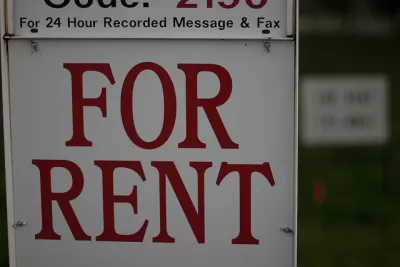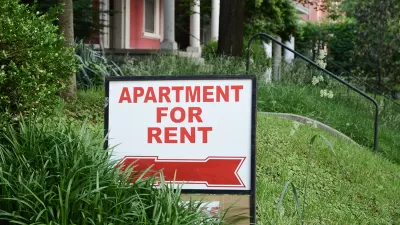Rent control's heyday came and went decades ago, as free-market advocates won out over long-term renters. With housing prices skyrocketing in many U.S. metros, the benefits of rent control may outweigh the harms.

The nation's stock of rent-controlled housing has been dwindling for years. Property owners across the country have successfully argued that rent control robs them of value, distorts the free market, and drives up rents for new residents. Economists overwhelmingly disapprove of it.
Even so, the county of San Mateo, California, is among a few that are taking another look at rent control. San Mateo County lies in the heart of Silicon Valley, where rents far exceed the grasp of many lower income workers. In larger cities, non-rent controlled tenants are under constant threat of displacement, as landlords raise rent to keep up with demand. Demand arises in part because supplies are constrained, with not nearly enough market-rate or affordable units being built in cities like New York, Seattle, Boston, and Washington, D.C.
Supporters of rent control argue that stable, long-term renters help create the sense of vibrancy that makes communities attractive (and expensive) in the first place. And they ultimately argue that the moral rights of existing residents take precedence over, or at least deserve a fighting chance against, the economic interests of new residents.
"The argument for rent control should be distinguished from the argument for affordability per-se," says Joshua Mason, an economics professor at Roosevelt University, told Pacific Standard. "Long-term tenants who contributed to this being a desirable place to live have a legitimate interest in staying in their apartments. If we think that income diverse, stable neighborhoods, where people are not forced to move every few years, [are worth preserving] then we collectively have an interest in stabilizing the neighborhood."
FULL STORY: In Defense of Rent Control

Study: Maui’s Plan to Convert Vacation Rentals to Long-Term Housing Could Cause Nearly $1 Billion Economic Loss
The plan would reduce visitor accommodation by 25,% resulting in 1,900 jobs lost.

North Texas Transit Leaders Tout Benefits of TOD for Growing Region
At a summit focused on transit-oriented development, policymakers discussed how North Texas’ expanded light rail system can serve as a tool for economic growth.

Why Should We Subsidize Public Transportation?
Many public transit agencies face financial stress due to rising costs, declining fare revenue, and declining subsidies. Transit advocates must provide a strong business case for increasing public transit funding.

How to Make US Trains Faster
Changes to boarding platforms and a switch to electric trains could improve U.S. passenger rail service without the added cost of high-speed rail.

Columbia’s Revitalized ‘Loop’ Is a Hub for Local Entrepreneurs
A focus on small businesses is helping a commercial corridor in Columbia, Missouri thrive.

Invasive Insect Threatens Minnesota’s Ash Forests
The Emerald Ash Borer is a rapidly spreading invasive pest threatening Minnesota’s ash trees, and homeowners are encouraged to plant diverse replacement species, avoid moving ash firewood, and monitor for signs of infestation.
Urban Design for Planners 1: Software Tools
This six-course series explores essential urban design concepts using open source software and equips planners with the tools they need to participate fully in the urban design process.
Planning for Universal Design
Learn the tools for implementing Universal Design in planning regulations.
City of Santa Clarita
Ascent Environmental
Institute for Housing and Urban Development Studies (IHS)
City of Grandview
Harvard GSD Executive Education
Toledo-Lucas County Plan Commissions
Salt Lake City
NYU Wagner Graduate School of Public Service





























